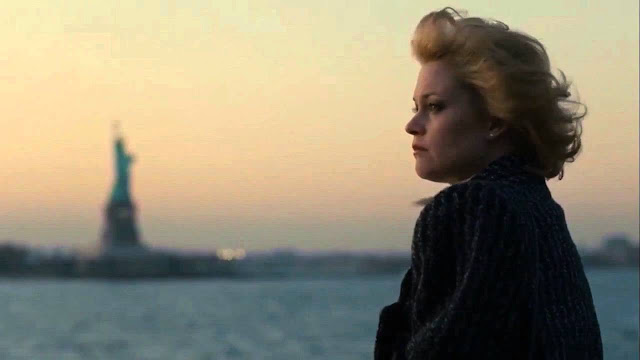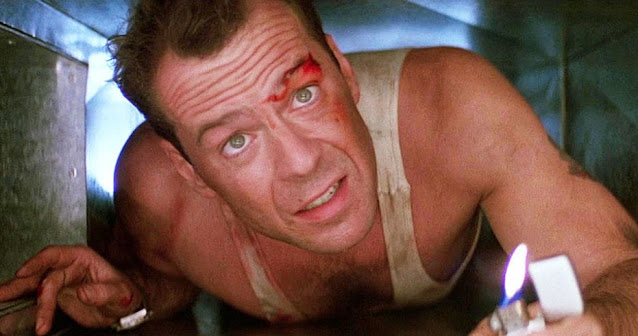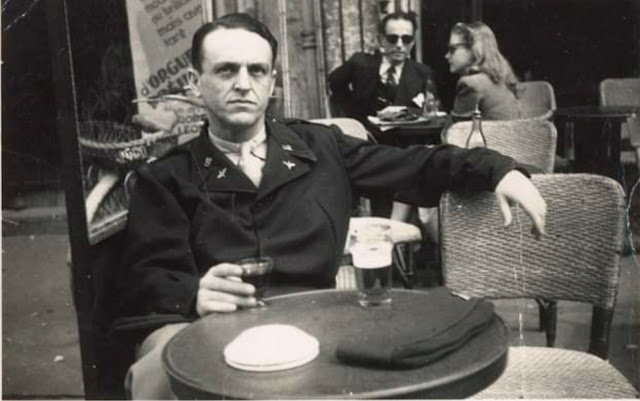Manhattan Commuters Inspired "Working Girl"
Working Girl was Kevin Wade’s debut as a screenwriter. Born and raised in Westchester, NY, Wade began working as an actor before writing his first play, Key Exchange, at the age of 27. Key Exchange was produced by the WPA Theatre in June 1981, just six weeks after Wade completed it. It turned out to be an off-Broadway smash, running for over a year, and was subsequently made into a film starring Brooke Adams.
The idea for Working Girl came to Kevin Wade in Manhattan’s Battery Park one morning in 1984. “People were pouring out of holes in the ground [the NY subways] and off the ferry,” said Wade. “If you looked right a little bit, you could see Ellis Island, where boats brought immigrants years ago. I wondered, ‘What is that immigrant story today? What is that land of milk and honey now?’”
 |
| Melanie Griffith as Staten Island Ferry commuter 'Tess McGill' in Working Girl |
Producer Douglas Wick happened to be walking in Battery Park with Wade at the time. Wick recalled, “Everywhere we looked, Kevin and I noticed smart-looking, pretty young women rushing to work in tennis shoes and carrying high heels. We started talking about them and realized that they all must have a story. Kevin went to work on the idea right away.”
Meanwhile, Doug Wick pitched the story idea to Carol Baum and Marcia Nassiter at 20th Century Fox. They liked the idea and put it into development, so Kevin Wade got to work writing a screenplay.
Wade decided to represent his heroine as “an immigrant every day, coming to the land of opportunity.” He fashioned his script to be a “contemporary equivalent to the story of the little immigrant called Giuseppe who sells umbrellas, and then 20 years later becomes the head of Macy’s.”
“But this is a little more than that,” Wade said. “It’s a story about the American Dream’s implicit promise that the door is open to anybody who has the smarts, and how America has evolved into a class system where white Anglo-Saxons run the country, and how hard it would be for someone like Tess to break through that.”
 |
| Screenwriter Kevin Wade, Producer Doug Wick and Joan Cusack as 'Cyn' in Working Girl |
To add realistic details to his script, Wade spent months interviewing Wall Street secretaries, brokers and female mergers and acquisitions executives. “I read a lot of books, read the financial pages of The New York Times, and managed to come up with something that sort of holds water,” Wade said. In his research, he heard a legend about a secretary from Brooklyn who fought her way to the top at a brokerage, but he couldn’t find out who she was. “I never met her,” Wade said regretfully. “I sort of made Tess up out of the whole cloth.”
During a research session at Wall Street’s Bear, Stearns & Co., Wade was taken around the company by a 30-year-old broker and vice president named Liam Dalton. “As part of what he thought I wanted to hear, he looked at the cafeteria line as the women came through, pointing out – secretary, executive, executive, secretary, etc. – from 25 yards away. The corporate battle atmosphere is a lot like the military. You know someone’s more powerful just by looking at his uniform.”
The project rattled around the studio for a couple of years, until Mike Nichols was shown the script in early 1987 and almost immediately agreed to direct the film. “One of the things that’s hardest for a director to find in the ‘80s is a good story,” said Nichols. “There are so few good stories left, and this was a very strong contemporary story with a good and enjoyable plot. Kevin worked out a lot of the details very carefully, and the characters’ lines were very surprising. Kevin writes dialogue spoken by real people in the course of real lives, and it’s funny, it’s alive.”
 |
| Director Mike Nichols (left) and cinematographer Michael Ballhaus (standing) on the set of Working Girl |
Mike Nichols could relate to the script’s central theme, as he was an immigrant himself. In 1939, when he was just a boy, his family fled Nazi Berlin to live in the United States. “When I started working on the script of Working Girl, the most important thing to me was the combination of immigrant and slave ship image,” Nichols explained. “The slaves, as usual, are imported from somewhere else – because nobody can afford to live in Manhattan – and then there’s the idea of the underground railroad, when Tess’ friend at the end leaps up in joy, because ‘one of us’ made it out. But the key was the immigrants, and the immigrant’s ear – immigrants develop a very keen ear for what is happening. They have to learn what is happening very fast. The Statue of Liberty, and the ferry, and the City of Oz aspect of Manhattan was what I started with.”
Working Girl Production Information, 20th Century Fox Press Release
Nikki Finke, “What Do the Real Secretaries Think?,” Los Angeles Times, 12/17/88
Alison Leigh Cowan, “How Three Plum Movie Roles Took Shape,” New York Times, 12/18/88
Jane Applegate, “Working Girl Hits Home With Wall Streeters,” Los Angeles Times, 1/8/89
Rose-Marie Turk, “Real Workers Spark Working Girl Wardrobe,” Chicago Sun-Times, 1/25/89
Richard Combs, “Slaves of Manhattan,” Sight & Sound, Spring 1989


Comments